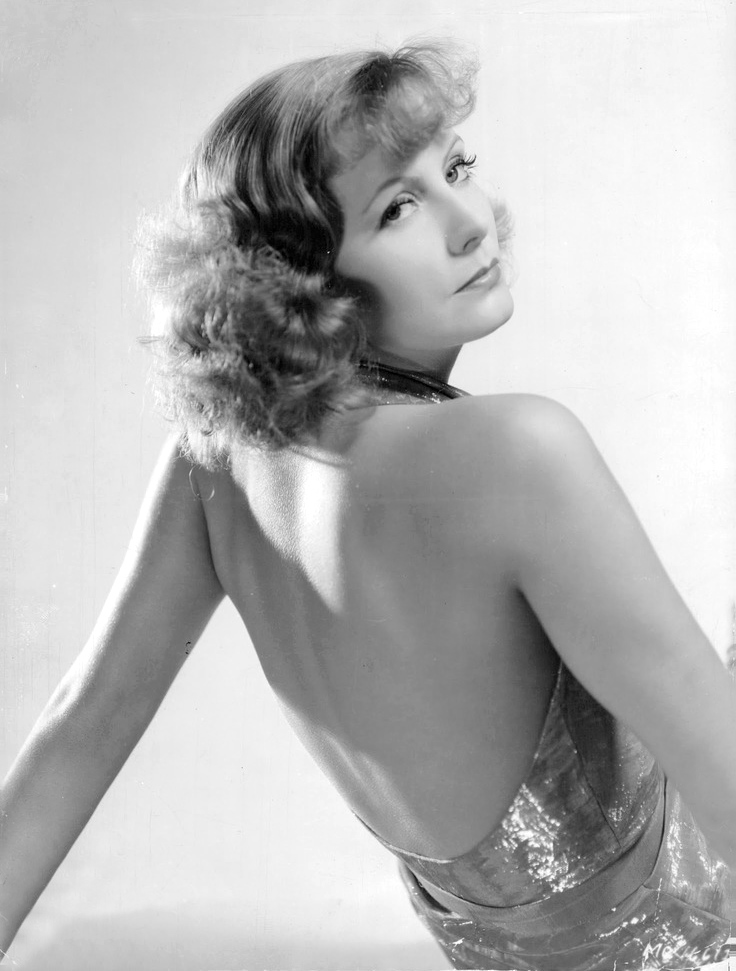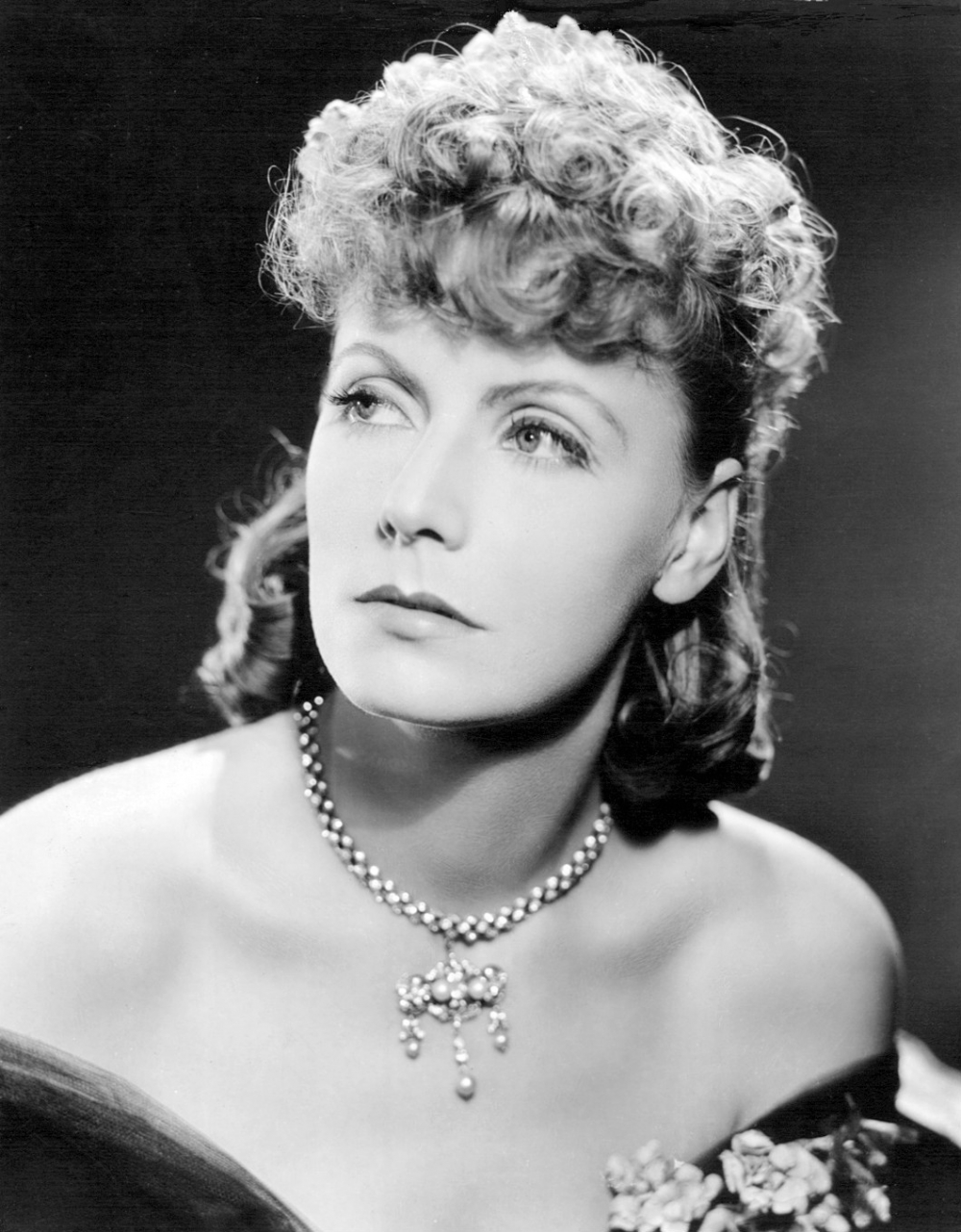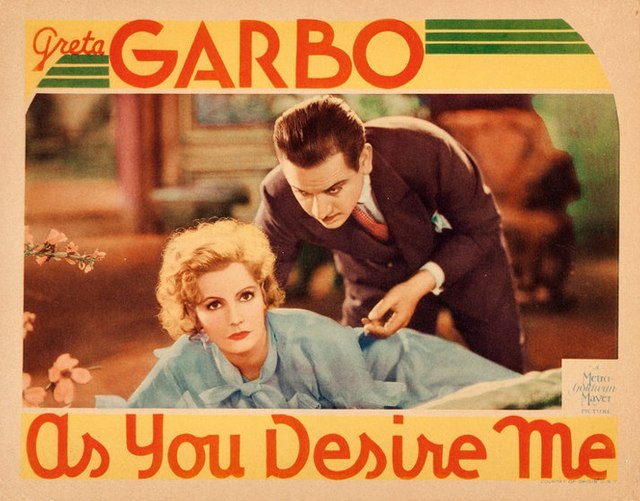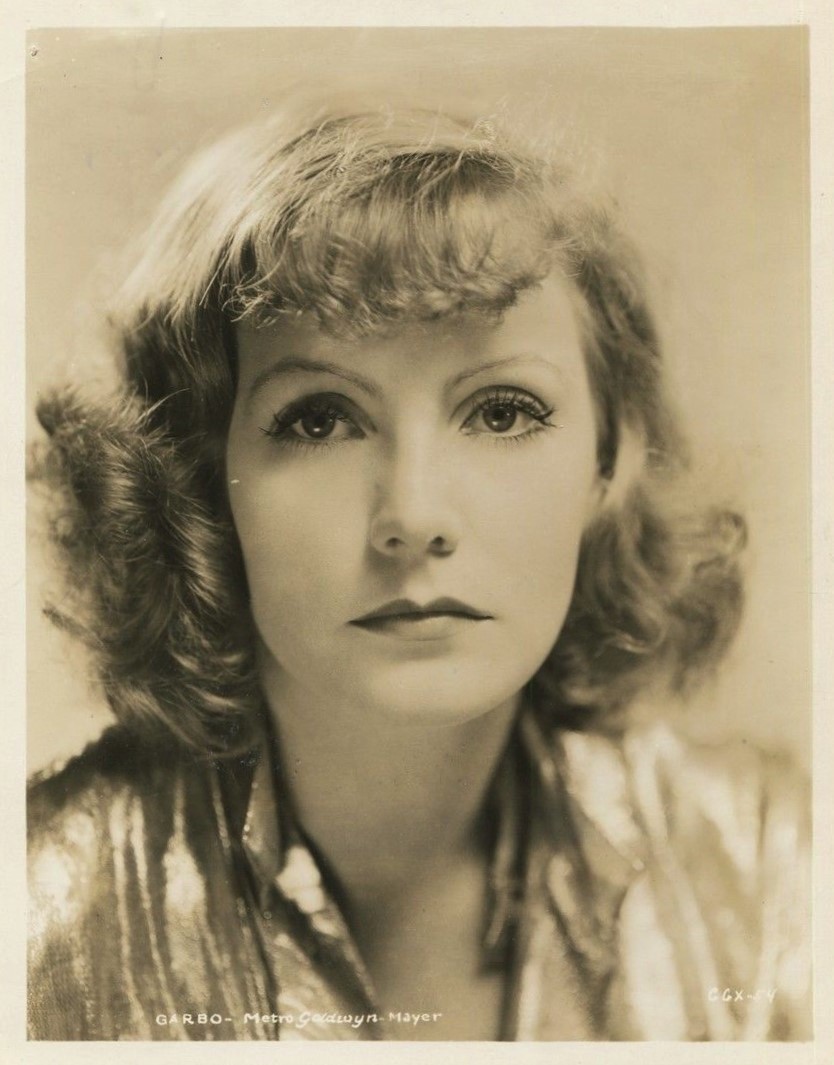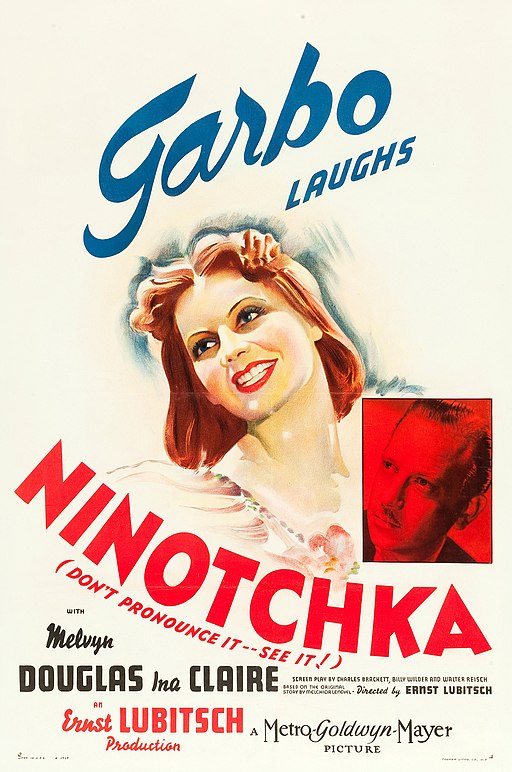Greta Garbo
back| Full Name | Greta Lovisa Gustafsson |
| Stage Name | Greta Garbo |
| Born | September 18, 1905 |
| Birthplace | Stockholm, Sweden |
| Died | April 15, 1990 |
| Buried | Skogskyrkogården Cemetery, Stockholm, Sweden |
| Married to | Never married |
| Children | No children |
| Notable films | Mata Hari - Anna Karenina - Camille - Ninotchka - Two Faced Woman |
Greta Garbo - "The Swedish Sphinx"
Greta Garbo (1905-1990) was a Swedish-born actress who became one of Hollywood's greatest icons during the silent film era and the transition to talkies. She began her career in Europe, gaining attention for her role in "The Saga of Gösta Berling" (1924). Moving to the U.S., she achieved stardom with films like "Flesh and the Devil" (1926) and "Love" (1927).
As talkies emerged, Garbo smoothly transitioned, with her first sound film, "Anna Christie" (1930), famously marketed with the tagline "Garbo Talks!" Her enigmatic presence and deep voice made her unique, captivating audiences in films like "Grand Hotel" (1932), "Queen Christina" (1933), and "Ninotchka" (1939).
Despite her overwhelming success, Garbo was intensely private, shunning the limelight and famously declaring her desire to "be alone." She retired from acting in 1941 after "Two-Faced Woman" and led a reclusive life in Manhattan until her death. Despite her relatively brief filmography, Garbo's legacy as a cinematic legend endures, celebrated for her naturalistic acting style and timeless allure.
Related
Full Biography Greta Garbo
Family Background and Childhood
Greta Garbo was born on September 18, 1905, in the Swedish capital of Stockholm. Her name than was still Greta Lovisa Gustafsson. Greta Garbo grew up in a working-class family. Her father Karl Alfred Gustafsson worked as a janitor and street sweeper. Her mother Anna Lovisa Johansson worked in a jam factory. She had two siblings, 7 years older brother Sven and 2 years older sister Alva. The family lived in poverty and Garbo's father and mother endured frequent periods of unemployment. After her father died in 1920, Greta left school, aged 14, to work and support her family.
Formative Years
Garbo’s early life was marked by hardships. She was employed in a barbershop where she washed her clients’ hair before the skilled hairdressers took over the serious work. Later she worked as a clerk in a department store. But her natural beauty stood out and she was asked to show hats and dresses as a fashion model for Nordiska Komapniet, the most luxurious department store in Stockholm. After that she began working as a model for cinema commercials. Here you can view her first commercial:
https://www.youtube-nocookie.com/watch?v=H37gaOscq98 . That commercial and some others got the attention of director Erik Petschler. He was so charmed with her appearance that he gave her a role in his new silent movie Peter the Tramp. You can see some parts of it here: https://www.youtube-nocookie.com/watch?v=Rq4ra69vp-U
Early Career Endeavors
Garbo’s acting journey then slowly came to a start with roles in short advertising films. This eventually led to her enrolling in the Royal Dramatic Theatre’s Acting School in Stockholm. It was during her time at this acting school that she was discovered by Finnish film director Mauritz Stiller, who became her mentor and gave her the stage name “Greta Garbo.” In 1924 Stiller asked Garbo to play the lead role in his new film “The Saga of Gosta Berling”. After the success of this film she played a role in the German film “Die freudlose Gasse”.
Her contact with movie director Stiller became eventually her ticket to Hollywood. Stiller was befriended with the Swedish MGM director and he convinced Louis B. Mayer, head of MGM, to come and meet Stiller in Berlin where he wanted to promote his film “The Saga of Gosta Berling”. But Mayer was more captivated by the leading actress than the movie itself. At Louis B. Mayer’s request Garbo made the trip to California where she was enrolled in many silent movies. In a way the silent movie made her career, as she couldn’t speak a word English. Garbo’s first American silent film was "Torrent" (1926). She quickly rose to international stardom, with her performances in "Flesh and the Devil" (1926), "Love" (1927), and "A Woman of Affairs" (1928).
In her early years in Hollywood, Garbo was renowned for her alluring presence and naturalistic acting style. Her roles in silent films like "Flesh and the Devil" (1927) and "Love" (1927) showcased her emotive capabilities and won her critical acclaim. The transition from silent to talking films marked the cementation of her stardom, with her voice becoming as iconic as her visage.
Transition to Sound Films
Garbo smoothly transitioned to sound films, with her first talkie, "Anna Christie" (1930), being promoted with the tagline “Garbo Talks!”. This film earned her the first of her four Academy Award nominations. Her sultry voice and distinctive accent only added to her allure, with films like "Mata Hari" (1931) and "Grand Hotel" (1932) further solidifying her status.
Semi-Retirement and Solitude
Garbo’s last film was "Two-Faced Woman" (1941), after which she took a hiatus that eventually turned into a permanent retirement. She became renowned for her reclusive lifestyle, living in Manhattan and rarely making public appearances, thereby contributing to her enigmatic persona.
Old Greta Garbo
Garbo’s career in the late 1930s faced a downturn with less successful films, and she eventually retired from acting in 1941 after the film "Two-Faced Woman". Post-retirement, Garbo led a private and solitary life, seldom appearing in public or media. Her aura of mystery intensified, and her reclusive nature contributed to the enduring fascination and speculation surrounding her personal life.
Apartment and Personal Life
Garbo resided in a luxurious apartment in New York City post-retirement. She was known for her solitary lifestyle and rarely made public appearances. She never married and had no children, focusing on her friendships, hobbies, and interests in art and culture. The solitude and enigma surrounding her life contributed to the air of mystery that continues to be associated with her persona.
Espionage Rumors
There were speculations and rumors about Garbo being involved in espionage during World War II. Some stories suggest she worked as a spy for the Allied forces, using her connections and charisma to gather information, although there is no concrete evidence to substantiate these claims. These rumors added another layer to the multifaceted and enigmatic image of Garbo.
Legacy and Impact
Greta Garbo remains an enduring icon of the Golden Age of Hollywood, known for her ethereal beauty, magnetic screen presence, and versatility in acting. She played a crucial role in transitioning the image of the Hollywood heroine from the vivacious flapper to a more sophisticated and liberated woman. Her performances, characterized by nuanced expressions and a naturalistic style, continue to be celebrated by critics and cinema enthusiasts. Her introverted personality and preference for solitude have only enhanced her mystique over the years.
Cause of Death
Greta Garbo passed away on April 15, 1990, in New York City. She died of pneumonia and renal failure, aged 84. Her ashes are buried at Skogskyrkogården Cemetery in Stockholm, Sweden.
Notable Films Featuring Greta Garbo
- 1926: Flesh and the Devil
- 1927: Love
- 1928: A Woman of Affairs
- 1930: Anna Christie
- 1931: Mata Hari
- 1932: Grand Hotel
- 1935: Anna Karenina
- 1936: Camille
- 1939: Ninotchka
- 1941: Two-Faced Woman
Personal Beliefs and Preferences
Greta Garbo valued her privacy intensely and remained an enigma both on-screen and off-screen. She never married, had no children, and lived alone as an adult. While her private life was the subject of much speculation and rumor, she did not confirm any relationships publicly. She once stated, “I want to be alone,” a phrase that became synonymous with her name.
Humanitarianism
While Garbo was intensely private, she did donate to various charities anonymously. Her philanthropy was usually focused on helping children and supporting arts and cultural institutions.
Awards and Achievements
Greta Garbo received an Honorary Academy Award in 1955 "for her unforgettable screen performances." She was nominated four times for the Academy Award for Best Actress and is considered one of the greatest female stars of Classic Hollywood cinema.
Awards:
New York Film Critics Circle Awards:
- Best Actress for "Anna Karenina" (1935)
- Best Actress for "Camille" (1936)
- Best Actress for "Ninotchka" (1939)
Venice Film Festival:
- Best Actress for "Romance" (1930)
Special Awards:
- Received a special participation trophy at the Venice Film Festival for her performances in her films during the 1934-1935 season.
- In 1954, Garbo was awarded the George Eastman Award, given by George Eastman House for distinguished contribution to the art of film.
Honorary Academy Award (1955) - For her "unforgettable screen performances."
Nominations:
Academy Awards (Oscars):
- Best Actress for "Romance" (1930)
- Best Actress for "Anna Christie" (1930) - It's worth noting that in 1930, the Academy allowed a nomination for multiple performances.
- Best Actress for "Camille" (1936)
- Best Actress for "Ninotchka" (1939)
Garbo was also inducted posthumously into the International Best Dressed List Hall of Fame in 1990. While Garbo never won a competitive Oscar during her career, her legacy and impact on cinema are indisputable, and the honorary Oscar she received in 1955 was a recognition of her incredible contributions to film.
Views on Hollywood
Garbo had a complicated relationship with Hollywood and the studio system. She was unhappy with the intrusive publicity and the imposition of studio control over her private life, which contributed to her decision to retire prematurely from acting. Despite her absence from the screen, her films have continued to captivate audiences, and her legacy endures.
Movies featuring Greta Garbo
Silent Films
- 1924: Gösta Berlings saga (The Saga of Gösta Berling)
- 1925: Die freudlose Gasse (The Joyless Street)
- 1926: The Temptress
- 1926: Flesh and the Devil
- 1927: Love
- 1928: The Mysterious Lady
- 1928: A Woman of Affairs
- 1929: Wild Orchids
- 1929: The Single Standard
- 1929: The Kiss
Sound Films
- 1930: Anna Christie
- 1930: Romance
- 1931: Inspiration
- 1931: Susan Lenox (Her Fall and Rise)
- 1932: Mata Hari
- 1932: Grand Hotel
- 1933: Queen Christina
- 1934: The Painted Veil
- 1936: Anna Karenina
- 1937: Camille
- 1939: Ninotchka
- 1941: Two-Faced Woman
Unfinished / Unreleased Films
- 1921: Peter the Tramp (Incomplete film)
- 1937: The Divine Woman (Lost film, only one reel survives)
- 1942: Conquest (Scenes cut, not released in her final film version)
Brief Overview of Selected Films
- The Saga of Gösta Berling: Her debut film where she played Elizabeth Dohna.
- The Joyless Street: A critical silent film representing the German cinema where Garbo played a significant role.
- The Temptress: Garbo played the role of Elena, depicting the story of a woman's power over men.
- Flesh and the Devil: This film, wherein Garbo played Felicitas, established her as a major star.
- Love: An adaptation of Tolstoy's "Anna Karenina."
- The Mysterious Lady: A silent drama where Garbo played a beautiful spy.
- A Woman of Affairs: A drama film based on Michael Arlen's play "The Green Hat," featuring Garbo in a significant role.
- Wild Orchids: A romantic drama featuring Garbo as Lillie Sterling.
- Anna Christie: Garbo’s first sound film, taglined "Garbo Talks!"
- Mata Hari: A pre-Code film featuring Garbo in the title role as a dancer and spy during World War I.
- Grand Hotel: An ensemble film with Garbo playing a prima ballerina.
- Queen Christina: Garbo played the 17th-century Swedish queen in one of her most iconic roles.
- Anna Karenina: Another adaptation of Tolstoy's novel, where Garbo played the title role.
- Camille: A film adaptation of the play based on Alexandre Dumas fils's "La Dame aux Camélias," featured one of Garbo's most lauded performances.
- Ninotchka: A comedy film wherein Garbo played a stern Russian envoy.
- Two-Faced Woman: Garbo’s last film, a romantic comedy wherein she played a double role.
This compilation represents her entire acting career, and she retired in 1941 after the release of "Two-Faced Woman," living a private life away from the public eye until her death in 1990.

